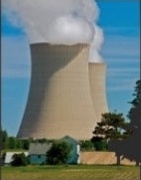Say-Peace Project
Introduction by Norimatsu Satoko
Robert Alvarez, a former senior policy adviser at the U.S. Department of Energy said in a Democracy Now! interview on June 10, “The nuclear industry, particularly in the United States, and elsewhere—Russia and Japan—has had a very long history of withholding information and misleading the public about the hazards of their activities.” Being no exception to Alvarez’s generalization, the Japanese government, since the mutiple meltdowns and explosions at the Fukushima Daiichi nuclear power plant in mid-March, has withheld or controlled information about health risks of radiation, expected dispersion of radioactive materials,1 and their actual contamination measurements in areas surrounding Fukushima Daiichi.2 Instead of providing candid information to the public, the government started campaigns in the opposite direction—to lull the public into worrying less about radiation and its health risks.For example, the Ministry of Health, Labour and Welfare’s pamphlet for pregnant women and mothers,3 of which three million copies were distributed to preschools, nurseries and clinics across the country, emphasizes that food, water, and breast milk are all safe within the government’s provisional standards. It is a “Don’t Worry” pamphlet with little concrete information to support their safety claims or about how to minimize radiation risks for infants, children and pregnant women. The Japanese Ministry of Education (MEXT)4 also produced a guide for teachers and parents in Fukushima, which stressed that “weak” radiation doses such as 250 mSv(millisieverts) over a number of years will have no health effects,5 and increased cancer risk was not recognized with cumulative doses of under 100 mSv, while the existing exposure limit for ordinary people is 1 mSv/year, and that for nuclear workers is 20mSv in Japan.6 Yet nuclear workers have been recognized as having radiation-caused sickness at an exposure level averaging as low as 5.7 mSv/year.7 Again, the entire guide emphasized “Don’t worry too much,” including a large section to describing the negative psychological effects of worrying about radiation.
Continue reading at Protecting Children Against Radiation: Citizens Take Radiation Protection into Their Own Hands
Featured Topics / 特集
-

A nuclear power plant in Byron, Illinois. Taken by photographer Joseph Pobereskin (http://pobereskin.com). カレンダー
-
Latest Posts / 最新記事
- Israel attacks Iran: What we know so far via Aljazeera 2025/06/13
- 核ごみ施設受け入れゼロ 全国47知事アンケートvia YAHOO!JAPANニュース (共同) 2025/06/12
- Trump Administration Gutting Regulatory Agency, Recent Nuclear Incidents, Coverup: No Time to Open Illinois for More Nuclear Power, Nuclear Watchdog Group Asserts via Nuclear Energy Information Service Illinois 2025/05/28
- Fukushima soil headed to Japan PM’s flower beds to allay nuclear safety fears via The Guardian 2025/05/28
- US East Coast faces rising seas as crucial Atlantic current slows via New Scientist 2025/05/26
Discussion / 最新の議論
- Leonsz on Combating corrosion in the world’s aging nuclear reactors via c&en
- Mark Ultra on Special Report: Help wanted in Fukushima: Low pay, high risks and gangsters via Reuters
- Grom Montenegro on Duke Energy’s shell game via Beyond Nuclear International
- Jim Rice on Trinity: “The most significant hazard of the entire Manhattan Project” via Bulletin of Atomic Scientists
- Barbarra BBonney on COVID-19 spreading among workers on Fukushima plant, related projects via The Mainichi
Archives / 月別アーカイブ
- June 2025 (2)
- May 2025 (10)
- February 2025 (1)
- November 2024 (3)
- October 2024 (1)
- September 2024 (5)
- July 2024 (4)
- June 2024 (3)
- March 2024 (1)
- February 2024 (6)
- January 2024 (4)
- November 2023 (8)
- October 2023 (1)
- September 2023 (7)
- August 2023 (5)
- July 2023 (10)
- June 2023 (12)
- May 2023 (15)
- April 2023 (17)
- March 2023 (20)
- February 2023 (19)
- January 2023 (31)
- December 2022 (11)
- November 2022 (12)
- October 2022 (7)
- September 2022 (6)
- August 2022 (22)
- July 2022 (29)
- June 2022 (15)
- May 2022 (46)
- April 2022 (36)
- March 2022 (47)
- February 2022 (24)
- January 2022 (57)
- December 2021 (27)
- November 2021 (32)
- October 2021 (48)
- September 2021 (56)
- August 2021 (53)
- July 2021 (60)
- June 2021 (55)
- May 2021 (48)
- April 2021 (64)
- March 2021 (93)
- February 2021 (69)
- January 2021 (91)
- December 2020 (104)
- November 2020 (126)
- October 2020 (122)
- September 2020 (66)
- August 2020 (63)
- July 2020 (56)
- June 2020 (70)
- May 2020 (54)
- April 2020 (85)
- March 2020 (88)
- February 2020 (97)
- January 2020 (130)
- December 2019 (75)
- November 2019 (106)
- October 2019 (138)
- September 2019 (102)
- August 2019 (99)
- July 2019 (76)
- June 2019 (52)
- May 2019 (92)
- April 2019 (121)
- March 2019 (174)
- February 2019 (146)
- January 2019 (149)
- December 2018 (38)
- November 2018 (51)
- October 2018 (89)
- September 2018 (118)
- August 2018 (194)
- July 2018 (22)
- June 2018 (96)
- May 2018 (240)
- April 2018 (185)
- March 2018 (106)
- February 2018 (165)
- January 2018 (241)
- December 2017 (113)
- November 2017 (198)
- October 2017 (198)
- September 2017 (226)
- August 2017 (219)
- July 2017 (258)
- June 2017 (240)
- May 2017 (195)
- April 2017 (176)
- March 2017 (115)
- February 2017 (195)
- January 2017 (180)
- December 2016 (116)
- November 2016 (115)
- October 2016 (177)
- September 2016 (178)
- August 2016 (158)
- July 2016 (201)
- June 2016 (73)
- May 2016 (195)
- April 2016 (183)
- March 2016 (201)
- February 2016 (154)
- January 2016 (161)
- December 2015 (141)
- November 2015 (153)
- October 2015 (212)
- September 2015 (163)
- August 2015 (189)
- July 2015 (178)
- June 2015 (150)
- May 2015 (175)
- April 2015 (155)
- March 2015 (153)
- February 2015 (132)
- January 2015 (158)
- December 2014 (109)
- November 2014 (192)
- October 2014 (206)
- September 2014 (206)
- August 2014 (208)
- July 2014 (178)
- June 2014 (155)
- May 2014 (209)
- April 2014 (242)
- March 2014 (190)
- February 2014 (170)
- January 2014 (227)
- December 2013 (137)
- November 2013 (164)
- October 2013 (200)
- September 2013 (255)
- August 2013 (198)
- July 2013 (208)
- June 2013 (231)
- May 2013 (174)
- April 2013 (156)
- March 2013 (199)
- February 2013 (191)
- January 2013 (173)
- December 2012 (92)
- November 2012 (198)
- October 2012 (229)
- September 2012 (207)
- August 2012 (255)
- July 2012 (347)
- June 2012 (230)
- May 2012 (168)
- April 2012 (116)
- March 2012 (150)
- February 2012 (198)
- January 2012 (292)
- December 2011 (251)
- November 2011 (252)
- October 2011 (364)
- September 2011 (288)
- August 2011 (513)
- July 2011 (592)
- June 2011 (253)
- May 2011 (251)
- April 2011 (571)
- March 2011 (494)
- February 2011 (1)
- December 2010 (1)
Top Topics / TOPトピック
- anti-nuclear
- Atomic Age
- Capitalism
- East Japan Earthquake + Fukushima
- energy policy
- EU
- France
- Hanford
- health
- Hiroshima/Nagasaki
- Inequality
- labor
- Nuclear power
- nuclear waste
- Nuclear Weapons
- Radiation exposure
- Russia/Ukraine/Chernobyl
- Safety
- TEPCO
- U.S.
- UK
- エネルギー政策
- メディア
- ロシア/ウクライナ/チェルノブイリ
- 健康
- 公正・共生
- 兵器
- 再稼働
- 労働における公正・平等
- 原子力規制委員会
- 原発推進
- 反原発運動
- 大飯原発
- 安全
- 広島・長崎
- 廃炉
- 東京電力
- 東日本大震災・福島原発
- 汚染水
- 米国
- 脱原発
- 被ばく
- 資本主義
- 除染
- 食の安全
Choose Language / 言語



